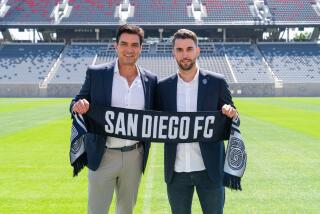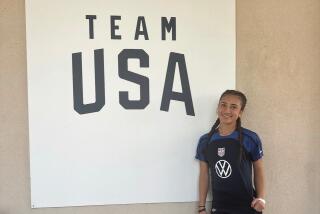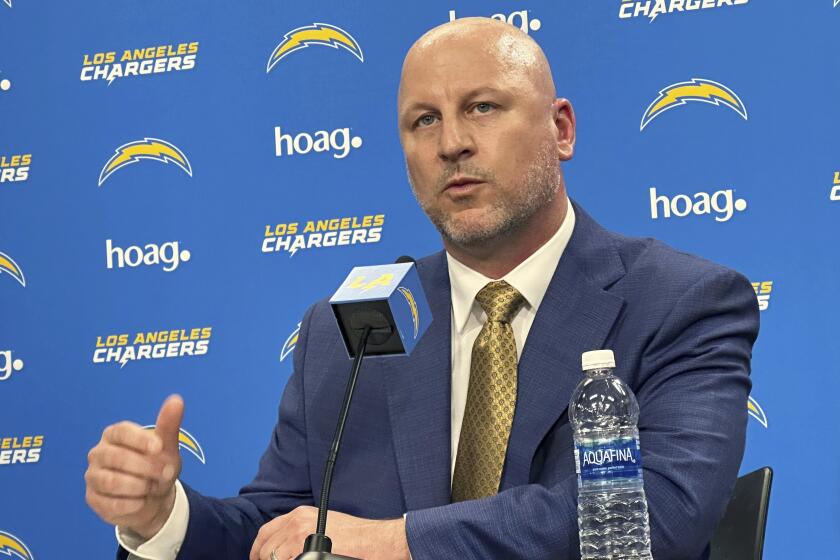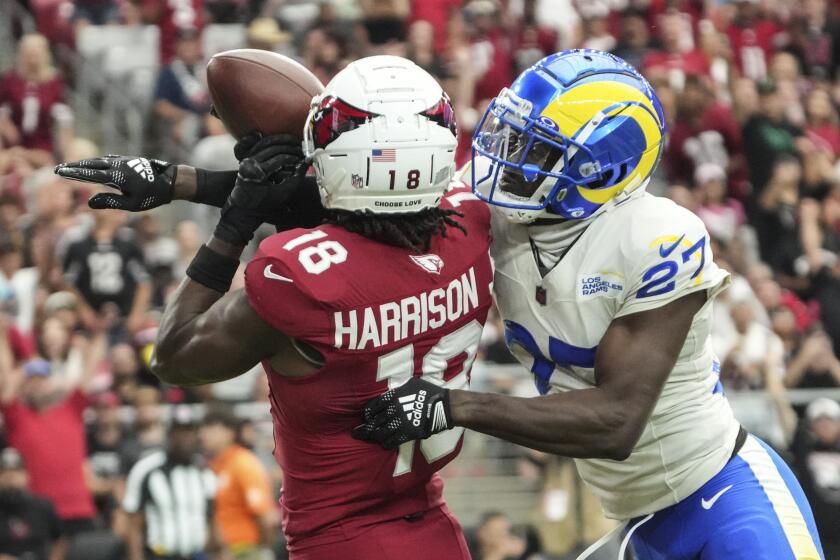Rise of pro soccer academies bad news for high schools and students
The demise of quality high school boys’ soccer in California is underway, thanks to the U.S. Soccer Federation’s insistence on forcing top high school players to choose between its academy program and high school competition.
As Sasha van der Most, the youth academy director for Chivas USA, puts it, “The players make the choices. We train four days a week, nine, 10 months a year, play top competition and don’t charge the players anything. If you’re in the soccer world, you know the best players don’t want to play high school anymore. If your dream is to play professionally, our way’s the best.”
Except, how many of the players actually make it to the pros? And what about the players’ education?
Chivas USA has 120 academy players on six teams ranging in age from 13 to 23.
This year, after criticism about the lack of an education component, Van der Most said Chivas USA is adding an educational counselor to work with players, along with a tutoring program.
“We’re highly aware soccer is not a secure future or career and the majority on our teams won’t be professional players,” he said.
Henry Santiago, Bell High’s athletic director, has become a vocal critic of the idea that teenagers must decide between high school or the academy program and can’t do both. He said Bell has lost at least five players in recent years to the Chivas USA and Galaxy academy programs.
“It really upsets me kids have to make that decision,” Santiago said.
Woodland Hills El Camino Real, one of the top City Section soccer programs, has four students who won’t be playing for the high school team this season, Coach David Hussey said.
“They’re put into a difficult situation,” Hussey said of the high school players. “I don’t know what the right answer is.”
Van der Most said soccer’s governing body wants players to train year-round.
“You make a choice,” he said. “The reason behind it is the level of soccer at our academies is higher than high school soccer. You lose two, three months of quality practice [in high school].”
But there’s always someone willing to test the system. Last year’s Gatorade national player of the year, Cristian Roldan of Pico Rivera El Rancho, played in high school and got a scholarship to the University of Washington.
Roger Blake, the executive director of the CIF, said he met with an official from the U.S. Soccer Federation last spring to express his displeasure with the system.
“We continue to be in active conversation because we adamantly disagree with their philosophy,” he said. “We believe kids can do both. It makes me sick to my stomach.
“The U.S. Soccer Federation believes they have to do this so we can win a World Cup and Olympic gold medal, which are great things, but the U.S. team is 30 people. They’re telling thousands of high school kids they have to give up their high school careers. It’s such a wrong message.”
Neil Buethe, a spokesman for the U.S. Soccer Federation, said, “High school has a place in the soccer landscape,” but his organization believes “a focused environment with more training and fewer matches against better competition” can help elite players catch up with their counterparts in Europe and elsewhere.
So, if anyone spots a great player in the high school ranks this coming season, go shake his hand and offer a big “thank you” for putting his school and teammates first and believing that he can be successful a different way.
More to Read
Go beyond the scoreboard
Get the latest on L.A.'s teams in the daily Sports Report newsletter.
You may occasionally receive promotional content from the Los Angeles Times.











